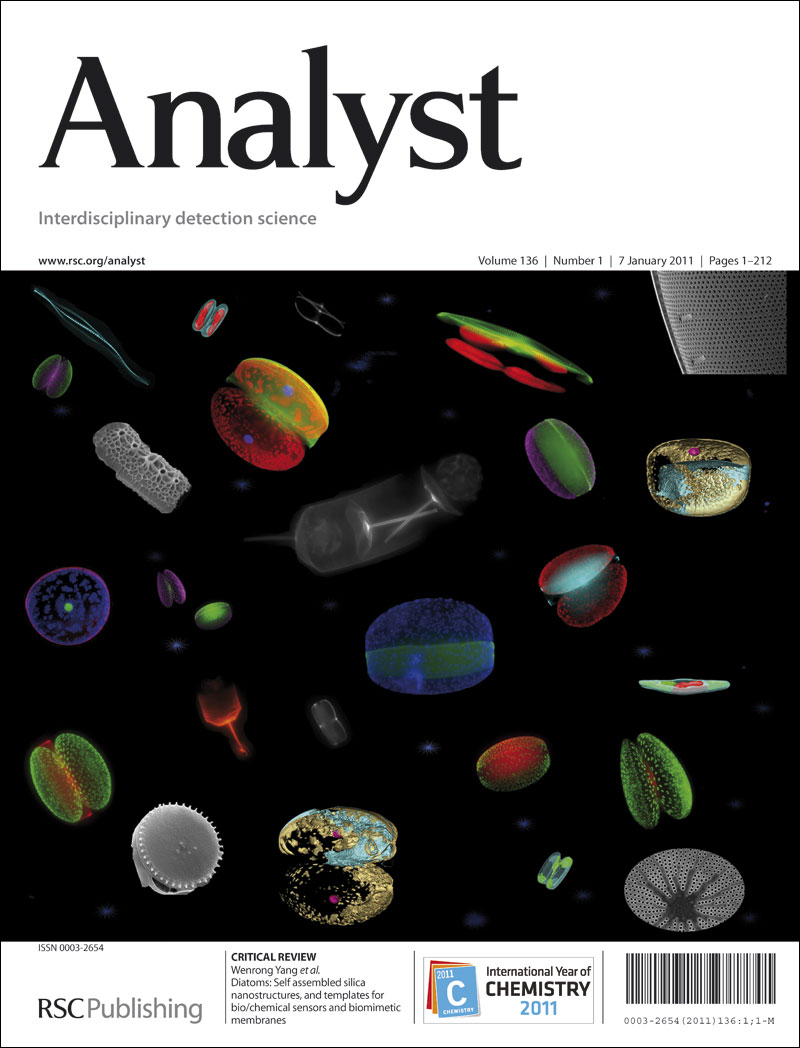A GQD-MnO2 Nanocomposite-Based Fluorescence Assay for Sensitive Detection of the Bcl-2 Gene
IF 3.3
3区 化学
Q2 CHEMISTRY, ANALYTICAL
引用次数: 0
Abstract
We developed a novel fluorescence detection method utilizing graphene quantum dots (GQDs) and manganese dioxide (MnO2) nanocomposites to enhance the sensitivity and specificity of in vitro monitoring of Bcl-2 gene expression, a key factor in tumor survival and treatment resistance. This method leverages the interplay between reduced glutathione (GSH) and hairpin DNA structures (H1 and H2) to simulate a cellular environment, enabling the redox-mediated disintegration of MnO2 nanosheets and the release of GQDs, restoring fluorescence. The presence of the Bcl-2 gene triggers a catalytic hairpin assembly (CHA) reaction, amplifying the Cy3 fluorescence signal and achieving a detection limit of 20.7 pM. The system demonstrated high specificity and stability, validated through control experiments with various DNA sequences. Optimization of key parameters, including MnO2 nanosheet concentration, GSH levels, and the ratio of hairpins H1 and H2, was critical for maximizing assay performance. The MnO2 nanosheets quench GQDs fluorescence and act as carriers for DNA probes, which are released upon reduction by GSH, mimicking intracellular redox conditions. The CHA reaction further amplifies the signal, allowing sensitive detection of low target gene levels. This biosensing platform integrates the unique properties of GQDs and MnO2 nanosheets, offering a real-time, sensitive, and selective method for monitoring Bcl-2 gene expression. This approach holds significant promise for early cancer diagnosis and personalized treatment strategies.GQD-MnO2纳米复合荧光法灵敏检测Bcl-2基因
我们开发了一种利用石墨烯量子点(GQDs)和二氧化锰(MnO2)纳米复合材料的新型荧光检测方法,以提高体外监测Bcl-2基因表达的灵敏度和特异性,Bcl-2基因表达是肿瘤生存和治疗耐药性的关键因素。该方法利用还原性谷胱甘肽(GSH)和发夹DNA结构(H1和H2)之间的相互作用来模拟细胞环境,实现氧化还原介导的二氧化锰纳米片的分解和GQDs的释放,从而恢复荧光。Bcl-2基因的存在触发了催化发夹组装(CHA)反应,放大了Cy3荧光信号,达到20.7 pM的检测限。通过不同DNA序列的对照实验验证了该系统的高特异性和稳定性。优化关键参数,包括二氧化锰纳米片浓度、谷胱甘肽水平和发夹H1和H2的比例,是最大化分析性能的关键。MnO2纳米片猝灭GQDs荧光并作为DNA探针的载体,在GSH还原后释放DNA探针,模拟细胞内氧化还原条件。CHA反应进一步放大了信号,允许敏感地检测低目标基因水平。该生物传感平台集成了GQDs和MnO2纳米片的独特特性,为监测Bcl-2基因表达提供了一种实时、灵敏和选择性的方法。这种方法对早期癌症诊断和个性化治疗策略具有重要的前景。
本文章由计算机程序翻译,如有差异,请以英文原文为准。
求助全文
约1分钟内获得全文
求助全文
来源期刊

Analyst
化学-分析化学
CiteScore
7.80
自引率
4.80%
发文量
636
审稿时长
1.9 months
期刊介绍:
"Analyst" journal is the home of premier fundamental discoveries, inventions and applications in the analytical and bioanalytical sciences.
 求助内容:
求助内容: 应助结果提醒方式:
应助结果提醒方式:


